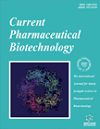
Full text loading...

This study investigated the role and potential mechanisms of discoidin domain receptor 1 (DDR1) in colon fibrogenesis.
We employed the DSS-induced chronic colitis and fibrosis model to evaluate the therapeutic potential of DDR1 knockout on colonic fibrosis. In vitro experiments involved generating human normal colonic epithelial cells (HIEC line) with DDR1 overexpression by lentivirus transfection. Human colonic fibroblasts were exposed to conditioned medium (CM) from the stably transfected cells that had been treated with transforming growth factor-beta 1 (TGF-β1). The cells were collected for molecular and biochemical analyses.
Our proteomics analysis of DDR1 indicated significant enrichment of proteins involved in the extracellular matrix and fibrosis. In DSS-treated DDR1-KO mice, attenuation of colonic fibrosis and reduced activation of colonic fibroblasts were observed, contrasting significantly with their counterparts in DSS-treated WT mice. Colonic fibroblasts exhibited a marked increase in α-smooth muscle actin and type I collagen expression when exposed to CM from HIEC cells with DDR1 overexpression. Finally, overexpression of DDR1 markedly elevated the levels of p-PI3K, p-Akt, p-mTOR, p62, and LC3B in HIEC cells, resulting in enhanced secretion of TGF-β1.
DDR1 in HIEC cells attenuates autophagy primarily by activating the PI3K/AKT/ mTOR signaling axis and concurrently increasing the autophagic markers LC3B and p62, thereby inducing paracrine secretion of TGF-β1, which drives the activation and proliferation of colonic fibroblasts and elicits a robust profibrotic response.
Our study suggests that DDR1 may be a potential therapeutic target for colonic fibrosis.

Article metrics loading...

Full text loading...
References


Data & Media loading...